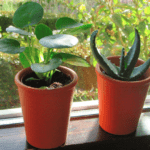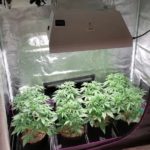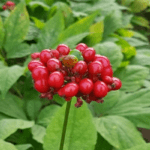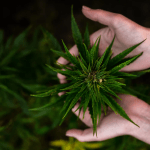Since cannabis legalization has taken off, so too has the public’s interest in growing cannabis plants. Despite the plant being relatively easy to grow, getting the same quality cannabis flower that is found in a dispensary is not quite as easy. One of the best ways to ensure a medical-grade cannabis plant is to start with high-quality cannabis seeds.

Cannabis seeds are not yet available in your average garden store, but growers can source high-quality seeds from Weed-Seeds.com. Online seed banks let growers choose their favorite strains and get them shipped directly to their door, all within the confines of the law.
Though a critical first step, high-quality seeds are not the only requirement for getting the best yields. Check out the article below for more information on how to grow great cannabis from seed.
Germinating Cannabis Seeds
Germinating cannabis seeds can be done in a few different ways, depending on the grower’s setup and comfort level. The classic way to germinate cannabis seeds is to plant them directly into the soil. The benefit to this method is that there is no need to disturb the delicate by transplanting it into a container once it sprouts.
Make sure to check the soil pH, which should be at 6, before planting a seed. Using high-quality soil, bury the seed about a quarter of an inch deep and keep it consistently moist by using a spray bottle filled with water to spritz the dirt. Growers can expect to see the sprout break above ground within seven days.
Another popular method of germinating seeds is called the paper towel method. Find a high-quality paper towel or cotton pad that is difficult to break and soak it with neutral pH water.
Put the seed inside of the material and then put it in a container with a lid. Put the container in a warm place and check it often to make sure it stays moist. Once the taproot is visible, carefully transplant it into the soil immediately.
One last common method is called the water method. It consists of placing the seed in a cup full of distilled water and keeping it at a stable room temperature for a couple of days. Once the seed sprouts, it must be transplanted immediately or it could drown.
Transplanting Seedlings
Once the seedling has been planted and starts to grow, unless the seed was sown directly in the ground, it is time to prepare to transplant it. Ensure the seedling has ample space to stretch and a high-quality light source while its container is prepared.
If growing in soil, choose a media that has a mixture of peat moss and coco husks. Invest in high-quality growing media to ensure the best results.
Choose an appropriately-sized pot for the plant to grow in. It must be at least one gallon, but remember that the bigger the container is then the bigger the plant can grow. If growing indoors, invest in a good grow light that offers the full spectrum of UV rays, so the plant is never without the light it needs.
Once the seedling has its first set of real leaves, it can be transplanted. Be careful not to disturb the roots too much, as the young plant is sensitive and it could go into shock.
Vegetative Stage
A cannabis plant’s vegetative stage is when it puts on the bulk of its size but doesn’t grow any flowers or buds. During this stage, the plant requires a bit of pruning to encourage growth and limit tiny leaves and branches that do nothing but suck water and nutrients away from the rest of the plant.
Additionally, a cannabis plant in this stage needs a high-quality fertilizer that is higher in nitrogen, which supports leaf growth.
Water the plant regularly, making sure not to overwater. Follow the feeding schedule listed on the nutrient solution of fertilizer selected for the plants. After several weeks, the plant may need to be staked in order to support the weight of the buds it will grow soon.
Flowering Stage
Whether the sun stays out for less time or the grower decides it’s time to switch the light schedule, cannabis plants enter the flowering stage when they receive less than 12 hours of light each day.
At this point, the nutrients the plant requires to grow flowers will switch. It will no longer need a nitrogen-heavy fertilizer and instead will need a fertilizer with more potassium and phosphorus, which encourages flower growth.
The plant will enter the flowering stage before it is visible. After a week or two, growers will start to notice the formation of white hairs that indicate a flower is growing.
After about 8 weeks, the cannabis plant will have fully flowered and will be ready to harvest in the near future. Check the buds daily for signs that they have finished and begin the harvest process right away to ensure they do not lose potency as they age.
Getting the Most Out of a Cannabis Plant Starts with Seeds
Growing cannabis from seed lets growers start their crop off on the right foot. It gives them the best chance at high yields of high-quality buds and helps them avoid dealing with nutrient deficiencies and diseases. High-quality seeds can be found online at reputable online seed banks.
Join 25,000+ smart readers—don’t miss out!







